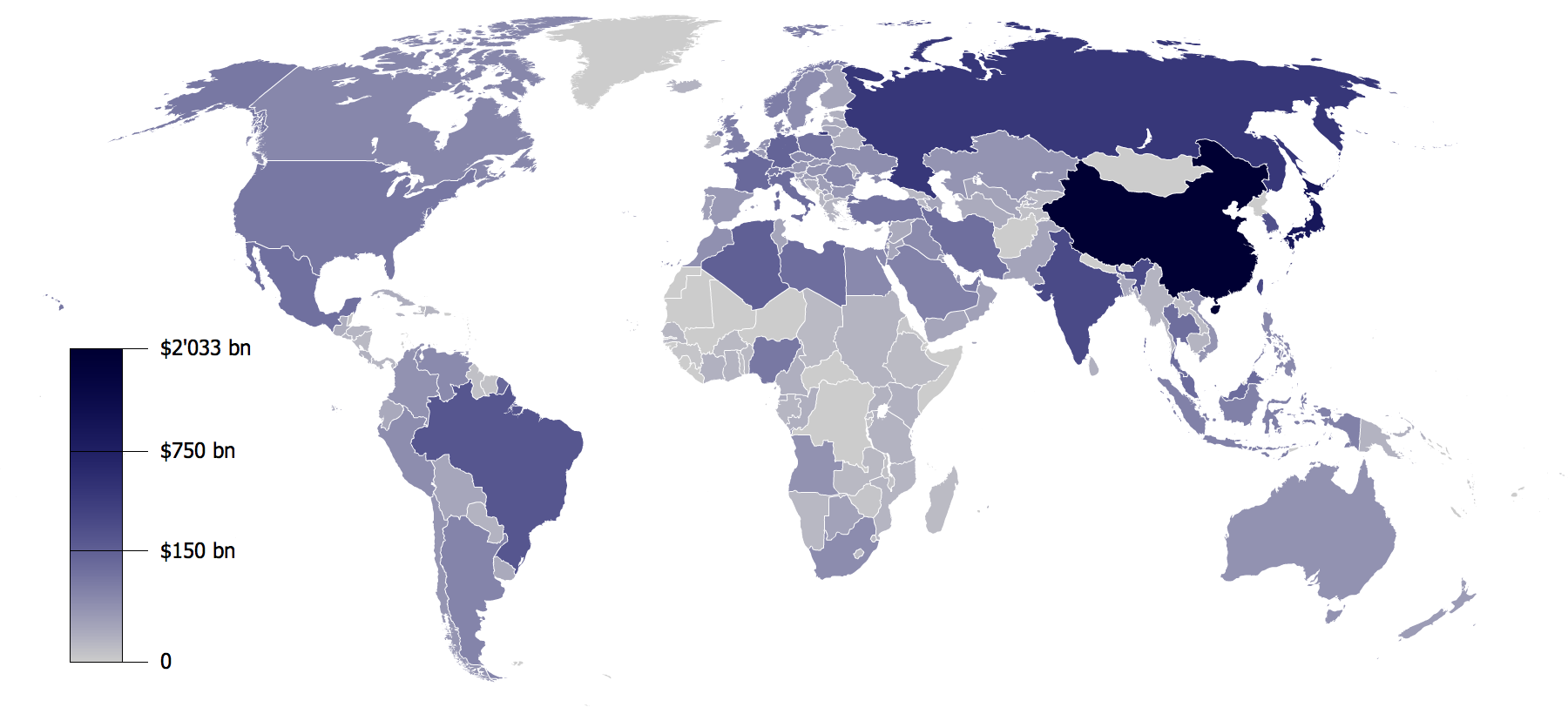Agriculture
- 2/3 of population dependent on agriculture
- provides food security
- 1/3 contribution to GDP
- Agriculture sector in focus after 5th plan
- Agriculture as a means for subsistence only
Features of Nepal’s agricultural sector
- 1/3 contribution to GDP
- About 74% of population dependent on agriculture
- Rural area is driven by agriculture and mostly subsistence farming
- Highly dependent on monsoon for cultivation
- Food crop preferred over cash crop
- Fragmentation of arable land
- Agriculture still not productive enough to support domestic demands
- Major sector providing employment
Problems
- Geographically difficult
- Traditional system of agriculture
- Highly dependent on monsoon
- Lack of irrigation
- Subsistence farming
- Lack of proper market for agriculture products
- lack of capital
- shortage of quality seeds and fertilizers
- lack of skilled man-power
- Neglected by government
- Low research and development activities
- Lack of resources or misuse of existing resources
Solutions
- Develop skilled manpower for growth of agriculture sector
- Proper management of required resources
- Promote cash crop and industrialization
- Professional agriculture should be promoted along with diversification of cultivation
- Manage energy requirement for agricultural development
- Enough capital formation via loan and other mechanism
- 12 month irrigation facility should be developed
- More research and development is essential
- Import modern technology and promote scientific farming technique
Industry
- Developed countries has highest contribution of its GDP from this sector. It is a reflection of development. Industry provides employment delivers services and goods.
- After the great depression of 1930s, government directly got involved in industries as private sector lost its confidence.
- Nepal industrial sector was established with direct investment from the government side.
- Biratnagaar Jute Mill 1993 BS
- Nepal tobacco company 2017 BS
- Hetauda Cement – 2033 BS
- Raghupati Jute Mill – 1993 BS
- Janakur Chorot – 2021 BS
- Udhyapur Cement – 2044
Industrial act – 2067
- Cottage industry: 2 lakh fix asset investment
- Small industry: 5 crore fixed asset
- Medium industry: 5 crore to 15 crore fix asset
- Big industry: 5 crore or more fix asset
Policy
- Art 12(1): Freedom to adopt any profession or industry
- औघोगिक व्यवसाय एन २०४९
- औघोगिक निति – 2067
Classification by product/service
- Agriculture and forest resources industry
- Export oriented industry
- Energy industry
- Mineral industry
- Tourism industry
- Construction industry
- ICT industry
- Service industry
Importance of industries
- Increase industrial product formation
- Established sustainable means of economic growth
- Reduce high dependence on agricultural sector
- Help national industrialization initiative
- Create employment
- Use local resources talent etc.
- Increase export and reduce import
- Attract FDI
- Build industrial infrastructure
- Reduce poverty, unemployment or semi employment
Challenges in industrialization
- Challenges created by globalization, liberalization & free market
- Meet the responsibility of joining WTO and other global entities
- Cash in on existing opportunity
- Adopt to modern tools, technology and changes.
Problems
- Lack of industrial security
- FDI is not attracted
- Diversification of export goods
- Increasing distance between employer and employee
- Lack in market management
- Lack of raw material
- Unfriendly investment environment
- Lack of skilled manpower
- Lack of new technology
- Labour policy is not industry friendly
- Energy crisis
- Lack of access to global market
Solution
- End political transaction period and improve friendly environment
- Ensure the safety of investors
- Improve relation between employers employee
- Use modern technology in industrial sector
- Emphasis on human resources development
- Make good quality product which can complete on international market
- Make good quality & standard exporting goods
- Make industry friendly policies
- Necessary arrangement to tackle energy crisis
- End cartelling, bandit, strike etc.
- Produce raw material within the country as far as possible
- MRN investment promotion
- Attract foreign and domestic investors
- Protect intellectual property
- One village one product program
Goal 13th plan
1,50,000 employment creation
Trade
- Trade means import/export of goods, buy & sell of goods and fixing price of goods. Intellectual property also comes under the domain of trade. Trade can be domestic trade or international trade. Trade involves the transfer of the ownership of goods or services from one person or entity to another in exchange for other goods or service or for money.
- World trade center is the umbrella union for trade. Nepal become the member of WTC in 2004 April 23.
Importance
- Good and services reach the international market
- International trade a form of earning foreign currency
- Easy availability of goods/services not available in domestic market
- Utilization of skill and resources available
- Helps in employment job creation
- Helps in trade balance & decrease trade deficit
- Improvement in lifestyle of public
Problems
- Trade deficit with India
- Lack of access to sea
- Lack of quality products & competitive edge
- Slow diversification of products
- Unorganized service sector
- Problem of bandha, strike, load-shedding, catering etc.
- Lack of clear policy rules and regulations
- Frequent tariff related problems with India
- Intellectual property trade has some policy level compications
- Lack of proper standard on exporting products which match the international standard
Solution
- Utilize world market available after being a member of WTO
- Promote intellectual property trade by building proper policy
- Being a LLDCs, there are certain rights we can enjoy proactive effort should be carried out to enjoy these rights
- Decrease trade deficit with India and other countries
- Priority to industries which run on domestic raw materials
- Solve problems of strike, Bandh, power shortage etc.
- Create a conducive environment for FDI
- Work on creating good employer & employee relation
- Infrastructure development facilitating trade
- Promote export by introducing subsidies and other policy level change
Policy
- Trade policy – 2065
- Integrated Nepal trade strategy – 2010
- Trade deficit 20% of GDP by end of 13th plan
New trends
- Trade is now a global concern after the established of WTO
- After WTO corporation has turned into competition as low tariff and quota system is virtually non-existent for developing countries.
- Domination of service trade
- Trade as main agenda
- Aid for trade
Tourism
Tourism is travel for recreation, leisure, religious, family or business purposes, usually for a limited time duration. The world tourism organization defines tourism as “travelling to and staying in places outside their usual environment for not more than one consecutive year for leisure, business and other purposes.”
Tourism can be domestic or international.
Importance
- Cultural exchange
- Global recognition
- Per capita income growth
- Saving of foreign currency
- Inflow of foreign currency
- Increase national status
- Rural development
- Economic growth
- Poverty alleviation
- Protection of cultural & natural heritage
- Capital formation
- Job creation
- Help in other sector like aviation’s, hotel, transportation etc.
Possibilities
- Himalayan range on the north
- Rafting, boating, paragliding
- Trekking and tours
- Wildlife safari
- Historical monuments
Problems
- Security, strike, bandh, transition period
- Expensive aviation fair due to the lack of direct flight to Europe
- Lack of tourism infrastructure
- Unorganized travel & tour operator in Nepal
- Lack of International airport in Nepal
- No proper study to identity new tourist areas
- Difficult terrain
- Occasional murder and robbery of guests
- Lack of advertisement in international media
- No work to attract quality tourist
- Majority of tourist stay less and spend less
Solution
- National flag carrier service expansion
- Up the security measures and guides and other man power
- Infrastructures like tea house, hotel etc. must be increased
- Identify new destinations for tourist
- Worldwide promotion of Nepal
- Focus of quality versus quantity tourism
- Spend income from tourism to tourism sector only
- End political instability and establish rule of law
- Public awareness
- Promote home stay tourism
- Organize festivals to promote local culture and tradition
- Need to work on promoting domestic tourism
- Aug. stay = 12.87 days
- Nepal tourism year 2011
- NAC capacity building
- 2012 Lumbini visit year
Nepal tourism long term plan 2020
- Aim to make tourism income 20 lakh USD per year
- 2013-2020
- 30% income invested on the same sector
Foreign Employment
- More than 30 lakh in foreign employment
Importance
- Economic growth in rural sector
- Decrease unemployment
- Poverty alleviation
- Strength national economy
- Improve quality of life
- Formation of capital
- Inflow of desperately needed foreign currency
Policies
- 109 countries open for foreign employment
- Foreign employment department
- Labor diplomacy in action
- Minimum wage fixes
- Labor contract with 5 countries
- Government labor contract with South Korea
- Foreign employment promotion board
- Labor attach est. in countries
Problems
- Lacks safety & discipline
- Women forces problem like trafficking, sexual …, mental torture etc.
- Lack of training & empowerment
- Low interest loan lacking
- Remittance used for consumption rather than capital formation
- Lack of training
- No work to identify safe and productive destination
- Problems of uneducated manpower going abroad
- Lack of legal protection of women
Solution
- Policy of mandatory training & skill development is required
- Discourage the flow of labours from third country
- Special provision & diplomatic initiatives to protect women
- Manage easy low interest without collateral
- Research to identify safe and productive destination
- Manage easy remittance system / banking system
- Small training and risk assessment for people going abroad
- Produce skill manpower capable of competition in global market
- Labor contract with more countries
- Use NRN for foreign employment target identification
Human resources
Human resources is the set of individual who make up the workforce of an organization, business sector or economy. Human resources in any organization can be divided into three levels namely policy level, execution level and supporting level.
Policy level:
- Forms policy
- Policy directives
- Coordinator
- Monitoring & evaluation
Execution level:
- Service delivery
- Communication
- Information analysis
- Consolation
Supporting level:
- Record keeping
- Information flow
- Service delivery
Logistic support
Importance
- Develop new technology and use new tech
- Use latest ICI
- Implements use existing resources
- Maintain financial discipline
- Poverty alleviation
- Increase effectiveness of nation development plan
- Maintaining women, untouchables and other down trodden groups
- Increase national production
- Social justice
Factors effecting human resources
- Technology
- Information
- Globalization
Contribution
- Increase efficiency of existing human resources
- Backbone for industrialization
- Supplies technical and non-technical manpower
- Increase production
- Increase per capita income and quality of life of public
Problems
- Expertise is lacking
- No clear policy on human resources
- Supporting level human resources in abundance
- Lack of motivation
- Lack human resources management
- Lack of proper training for human resources development
- Politicization of human resources management
Solution
- Curb political intervention
- Increase training & skill development programs
- Policy to acquire, develop, use and maintain human resources in necessary
- Policy to encourage morale
- Arrange necessary resources for human resources development
- Job distribution according to education, capability, experience and interest to get the most out of available human resources
- Create good atmosphere for human resources to work & thrives
- 15-59 years population = 57%
- Literacy rate =65.9%
- Leadership development
- Use experience of retired civil servants to train new comers.









Thank you very much for such useful post in English. Hope other remaining lesions will be posted in very near future. I will never forget kind cooperation for such useful articles.
sir industry trade tourism ko note xaina